
What is Offline Marketing? Types, Strategies & Examples
“Offline marketing is dead. Today, everything happens online.” You’ve heard those claims before. As you’re nodding along, a catchy TV commercial you saw last night pops into your head, making you crack a smile. So much for outdated.
Even though the average offline marketing spend is projected to decline by 5.5% in the US, offline marketing strategies are still fruitful—especially for brand awareness and local advertising.
Check out this offline marketing guide to remember good-old marketing times and discover how they fit into the modern world.
Reach people, wherever they are
Merge offline with email marketing tactics to boost engagement.
Try MoosendWhat Is Offline Marketing?
Offline marketing—also known as traditional—refers to all types of marketing activities that don’t require internet access on the consumer’s end. Well-known offline marketing strategies include TV commercials, flyers, billboards, and press releases.
Offline doesn’t mean obsolete. Businesses have modernized those promotional means to reach consumer expectations and stand out from competitors. Take digital signage as a reference. Instead of adding static informational boards inside stores, business owners use electronic displays with alternating content to capture visitors’ attention.
Offline doesn’t mean offline-only, either. You can merge traditional and online marketing tactics to create an enhanced user experience across different touchpoints. For instance, adding QR codes to handouts leading to your website or social media is a common combo.
Offline Marketing Benefits
Still hesitant or undecided? Let’s see some of the top benefits of offline marketing efforts:
- Builds local trust and connection: It helps local businesses establish their brand in their area and build in-person relationships with visitors and customers.
- Reaches specific audience segments: Some audiences, such as Baby Boomers, don’t always make purchase decisions online, so offline marketing efforts are more fitting.
- Enhances brand credibility: Press releases, TV placements, and billboards signal professionalism, as they’ve been approved by notable stakeholders before broadcasting.
- Supports relationship-based sales: Consumers need to feel trust before making purchases. Guidance through in-person interactions can boost that feeling.
- Has less competition than online: Algorithms and doomscrolling can “doom” your promotional efforts, while offline marketing channels create more memorable experiences.
Offline Marketing Limitations
There are always two sides to a coin. Here are some offline marketing disadvantages to keep in mind when crafting your promotional strategies:
- It’s usually more expensive than digital marketing tactics, especially organic ones, and requires more resources and time to deliver results.
- The return on investment and conversions of traditional marketing tactics are harder to track compared to digital ones.
- Offline marketing has a more limited reach and burdens businesses wanting to expand to a wider audience.
- Traditional tactics such as printed ads are usually less sustainable than digital ones.
- It’s less flexible and slower to iterate—if a mistake is made, it’s hard to take it back in time.
Do these limitations make it an off-the-list tactic? No, as with the right approach, it can work magic. You just need a good marketing plan and thoughtful budgeting.
Most Common Types of Offline Marketing with Examples
Let’s explore some widely used offline promotional materials and marketing strategies that can help businesses stand out:
Business cards
Business cards don’t just carry contact information anymore. With the right design and copy twists, you can turn them into brand assets. Apart from your logo, add your brand colors to give people a first impression of your business. Include your slogan or main services to make it more engaging and informative.
Apart from contact information, such as name, telephone number, and email address, merge digital channels, too. Add your website address or a QR code and social media handles to invite them online to continue their journey with your brand.
Here’s a business card example that checks most boxes:
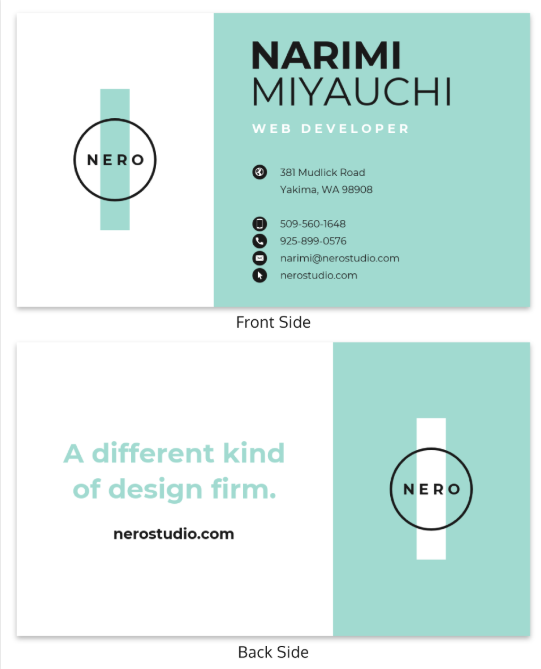
Direct mail
Remember the last time you received a card or letter by post mail? If you run a local store, sending direct mail campaigns is a clever tactic to surprise and delight existing customers or attract new ones.
Seasonal greeting cards, product catalogs, brochures, coupon codes; find the best initiative for your business and start distribution. The more personalized your direct mail campaigns look, the better—especially post cards and letters.
IKEA has nailed this tactic through catalogs for years:
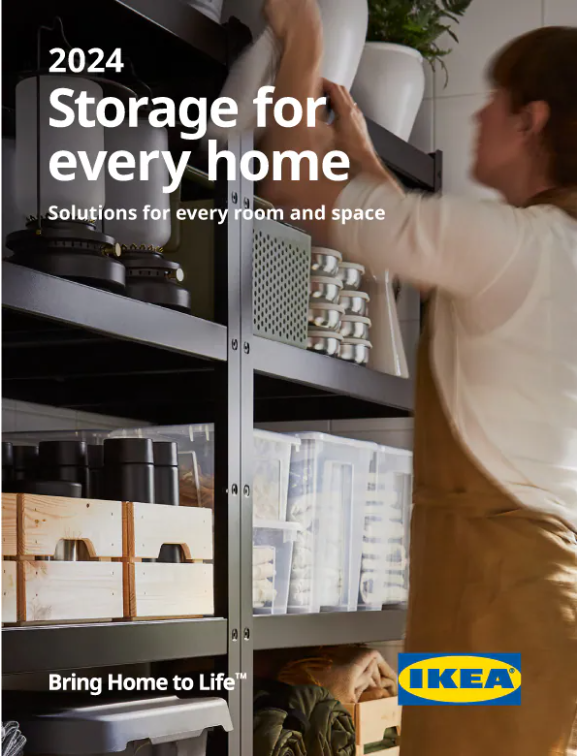
Product samples
Want to give potential customers or existing ones a taste of what you offer? Share samples to try out your products, and hopefully, stick to their minds. You can offer samples at local events or stores to gain momentum.
Also, you can create product bundles or branded merchandise (swag) featuring your logo to showcase your brand across a variety of items and formats. If you’re considering sending them to influencers to explore collaborations or gain popularity from user-generated content, make sure that your target audiences align.
Experiential marketing
Another exciting offline marketing idea that leaves an impression on customers and prospects is experiential—or live—marketing. Instead of showing your products to potential customers, design an immersive and truly engaging experience they can enjoy as participants or bystanders.
For example, place pop-up stores in high-traffic areas, run workshops during conferences, and join concerts or sporting events. Offline demos can also loosely fit in this category when displayed during events or in-person networking sessions. So does guerilla marketing—the launch of creative marketing campaigns noone would expect.
Here’s an example from McDonalds:
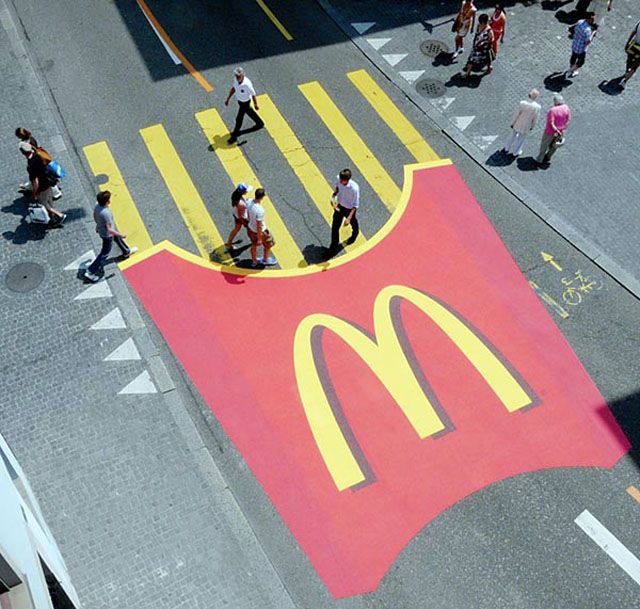
Shopper marketing
Have you ever caught yourself adding a few last-minute items to your cart while going to checkout? Shopper marketing did its trick—the process of optimizing customer experience at critical points throughout the journey with your brand using behavioral insights.
Visual merchandising, free samples at checkout, loyalty programs, and product demos are some of the main tactics marketers use to drive more sales and brand awareness. So, if you’re looking for ways to revamp your store, step into your customers’ shoes and visualize how they would exit satisfied and curious about your brand.
Hand-outs
Even though pamphlets and flyers are considered old-fashioned and are linked to a negative environmental impact, you don’t need to cross them out of your marketing list for good. Distribute them more mindfully, for example, during events or tradeshows or to promote your business locally.
Spread your brand message using creative elements and vivid images. You can also integrate online with offline marketing campaigns, by printing out social media posts with positive reviews or QR codes to attract more people to your digital channels.
Radio/TV ads
Would you promote your products or services through TV commercials or radio ads? Brands with a global audience still trust these offline channels to reach customers and prospects—especially people who don’t use the Internet.
Those ads should be placed strategically during a program for a greater impact. We’ve all seen a rise in toy TV commercials around Christmas or food market ads before Thanksgiving—and it makes sense. Instead of ads, you can also feature your products on radio or TV programs.
Those commercials are usually expensive, but you can use your budget effectively by placing the same ads on multiple channels. For instance, a TV ad can also work on YouTube while a radio ad can play on a podcast.
Check out this amazing commercial by Coca Cola, aiming to delight younger audience:
Press releases
News and print media still have power. Craft informative press releases focusing on benefits and manufacturing assets of your products or services and send them to journalists and PR you–and your audience—trust.
Choose media firms and means that can give you access to your target audience. They’ll also act as a form of social proof. Later, you can use their logos on your digital channels to earn your audience’s trust faster.
For instance, Bite was approved by well-known firms such as Cosmopolitan and Healthline, with direct access to their target audiences.
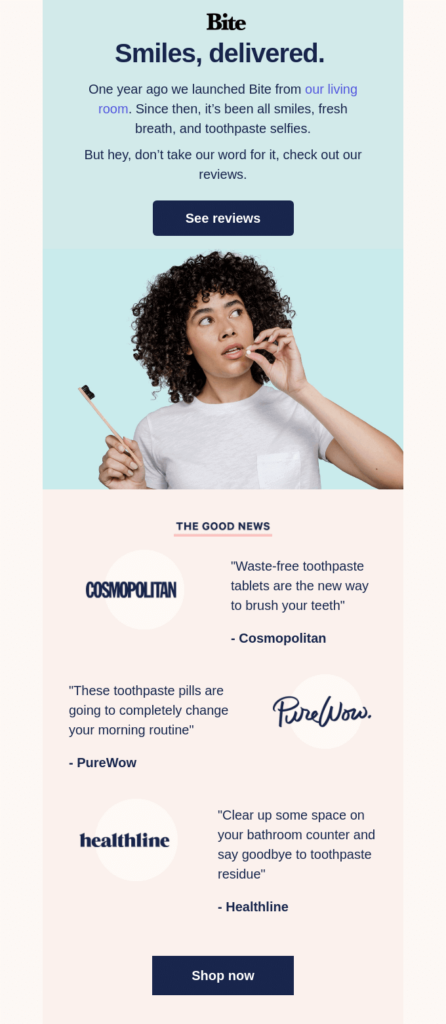
Events/Trade shows
When was the last time you joined a local event or tradeshow to promote your business? Even though participating in such initiatives can be costly, displaying your brand to the right people and mingling with them can be a gamechanger.
First, network with decision-makers in your target market and introduce them to your brand in a way that sticks. Run an interactive product demo. Hand over a flyer with a QR code and a coupon. Or even join a heart-warming conversation about the challenges someone experiences that your business could address.
Presenting workshops or offering free consultations are also great offline marketing methods. For instance, if you have a career coaching service, you can attend an academic conference and offer quick resume checks for graduates.
Community service
Consumers have become more conscious about their purchase decisions and increasingly select brands with environmental and social concerns. But instead of stating, you need to practice them to convince your audience.
Sponsorships, volunteering, or donations to non-profits are common business practices. Partnering with local services is also a great idea. Make sure that your brand values align with those of the organizations and causes you support so that employees or customers “enlist” faster.
For example, Warby Parker’s “Buy a Pair, Give a Pair” initiative has gained many supporters over the years:
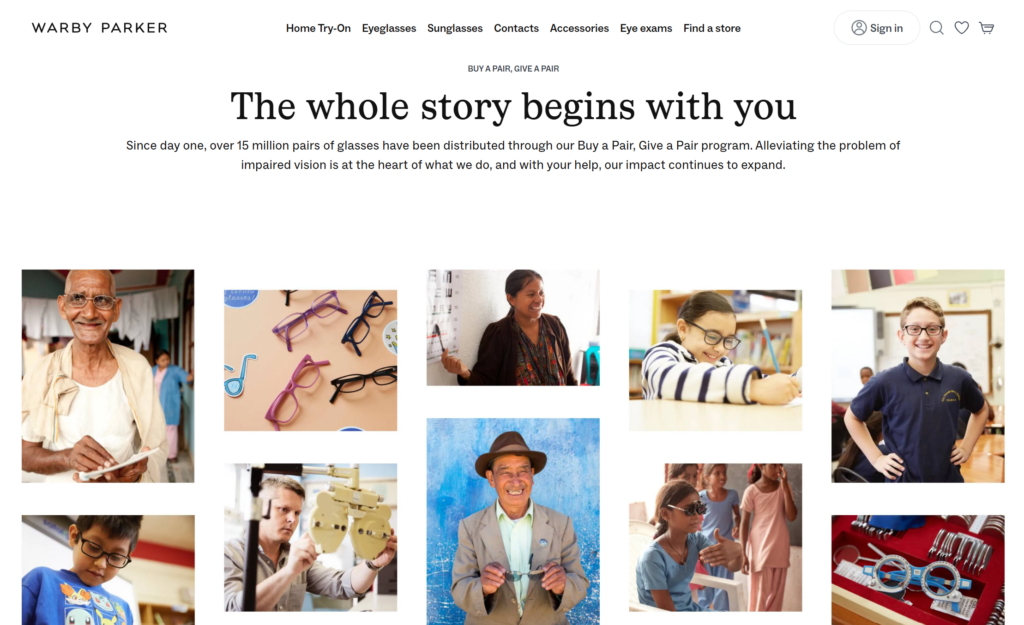
Billboards
Remember when millions of social media promotional posts were just a few billboards in high-traffic areas? Billboards still count, even though they’re mainly affordable for corporations as they require a big budget.
However, billboards remain prestigious and high-quality brand awareness tools. If you believe they’re worth your time and budget, think of the best location to place them, among travel stations, shopping centers, or tourist attractions based on your target audience.
And of course, you need something epic to grab attention. Think of Nike’s billboards with Serena Williams and other athletic legends people look up to. Or Surreal’s unique, humorous ads that are hard to miss and forget.
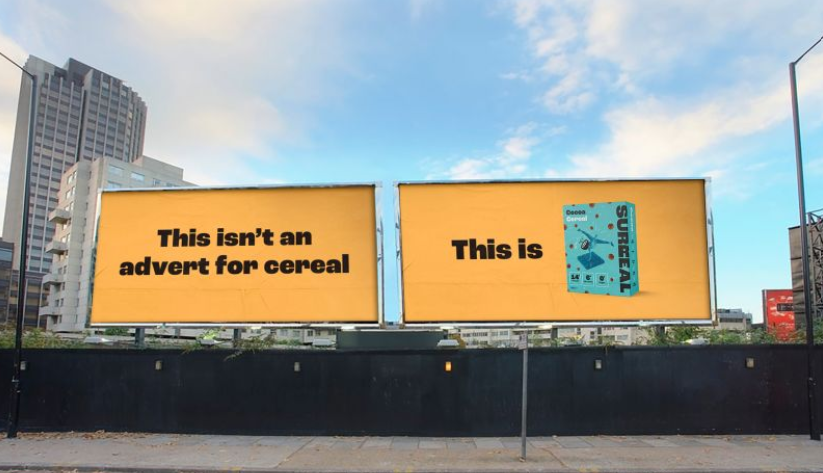
Cross-promotions
Another great offline strategy is partnering with other businesses operating in your target market. You can co-develop new products or offer complementary services. For example, if you have a skincare brand, share flyers or business cards of a beauty salon you partner with, who can use your products for treatments.
Just make sure that businesses you partner with share similar values with you and target audiences with the same demographics.
Offline Marketing Best Practices
One of the drawbacks of offline marketing is measuring its impact. How can you track the success of a billboard or freebies? While it’s not always easy, there are certain tactics that can bring results—and merging offline with online marketing is one of them:
1. Ensure consistent branding across channels
All your marketing materials, offline and online, should have a cohesive message to be impactful. Using your logo, brand colors, and messaging will help consumers recognize you faster next time and connect you with your products.
Plus, cross promoting your channels can get you a long way. For example, add social media and your website URL on business cards and hand-outs or invite ecommerce customers to your physical stores through your website or email campaigns. More touchpoints, better memorizing.
Remember that each offline channel is unique. You cannot use the same content for press releases and flyers—tailor it to each medium based on its purpose.
2. Build clear call-to-actions
What would you like a customer or prospect to do after interacting with your offline marketing materials? Do you want them to visit your website, drop by your store, or claim a coupon you shared with them?
Having a clear call-to-action in mind for offline and digital ads can highly affect their success if they’re clear. For example, add incentives like coupon codes on handouts and billboards or share a QR code with a calendar link during events to invite prospects to product demos.
Sometimes call-to-actions are subtle. Offline strategies such as community engagement and press releases are more like calls for trust and inspiration. However, visualizing how a prospect should act or feel when interacting with an offline ad can lead to better experiences.
3. Write engaging messages without overselling
Apart from discounts and deals, consumers also look for values and vision. Overloading them with sales or forceful language to claim your products doesn’t always bear fruit.
Instead, focus on earning their trust by explaining how your products and services will fit in with their daily lives and make it better. Social proof is always key. Partnering with influencers for off- and online campaigns or highlighting some of your best testimonials can be a powerful word-of-mouth strategy.
Finally, ensure that your offline messages align with your online ones. Just tailor them to the medium you use each time to make it more relevant.
4. Consider local relevance and timing
To drive action, create time-relevant offline campaigns that appeal to the culture and values of the people you’re targeting in your local area.
Let’s imagine that you have a retail store. You can plan seasonal campaigns, such as Christmas ads, to invite people to your stores to buy Christmas gifts or goodies. Or run back-to-school campaigns to help parents—and children—get ready for school early on.
Minding these parameters can boost engagement and give you a competitive advantage over similar brands. Consumers will feel that you really understand their needs by offering solutions proactively.
5. Integrate offline with online tactics
When in tandem, offline and online marketing techniques can get your brand far and wide.
Let’s explore some examples:
- Collecting emails during in-person interactions to send follow-ups.
- Adding QR codes to offline campaigns leading to digital touchpoints.
- Coming-soon campaigns that interconnect across channels and build anticipation.
- Social proof collected in-store and online to praise customer experience.
This integration will help you reach out to your audience in different touchpoints and nurture them where they prefer to hang out.
6. Measure offline marketing
Measuring the success of an offline campaign can be challenging. You often need to combine digital methods to reach safer conclusions. For example, you can use tracking codes, such as QR codes or dedicated phone numbers to measure the success of certain ads.
If you run offline ads, such as billboards, events, or flyers, track the sales in this specific region to understand their effectiveness. Or run surveys asking participants where they heard about your product to get a holistic understanding of how your campaigns work.
Finally, track conversations online through social listening tools to see how people responded to certain bigger-scale activities, such as tradeshows and workshops.
Yes, Offline Marketing Is Still On
It’s official! Offline marketing is still valuable and can give you access to new audiences, especially when targeting local areas. Just find the tactics that can elevate your brand and think of best practices to capture people’s attention in real, non-digital life.
Finally, find the best mix of offline and online tactics to meet your audiences where they are and delight them with your brand assets.
FAQs
Here are some frequently asked questions around our topic:
1. What’s the difference between online and offline marketing?
Online marketing refers to the marketing and brand materials consumers can see while browsing the Internet (e.g., social media, paid ads, etc.) while offline takes place during in-person interactions (e.g., billboards, events, etc.)
2. Is traditional marketing outdated?
No—traditional marketing has been modernized over the years with the rise of digital tools. However, relying solely on offline tactics will limit your brand exposure.
3. What are the best offline marketing tactics for events?
During events, you can give product presentations, run interactive demos, distribute flyers and coupons, and take part in workshops and networking sessions.
4. Why should startups consider offline marketing in the digital era?
Offline marketing is less competitive, leading to more memorable marketing experiences, and higher trust. Plus, it helps reach non-digital audiences.


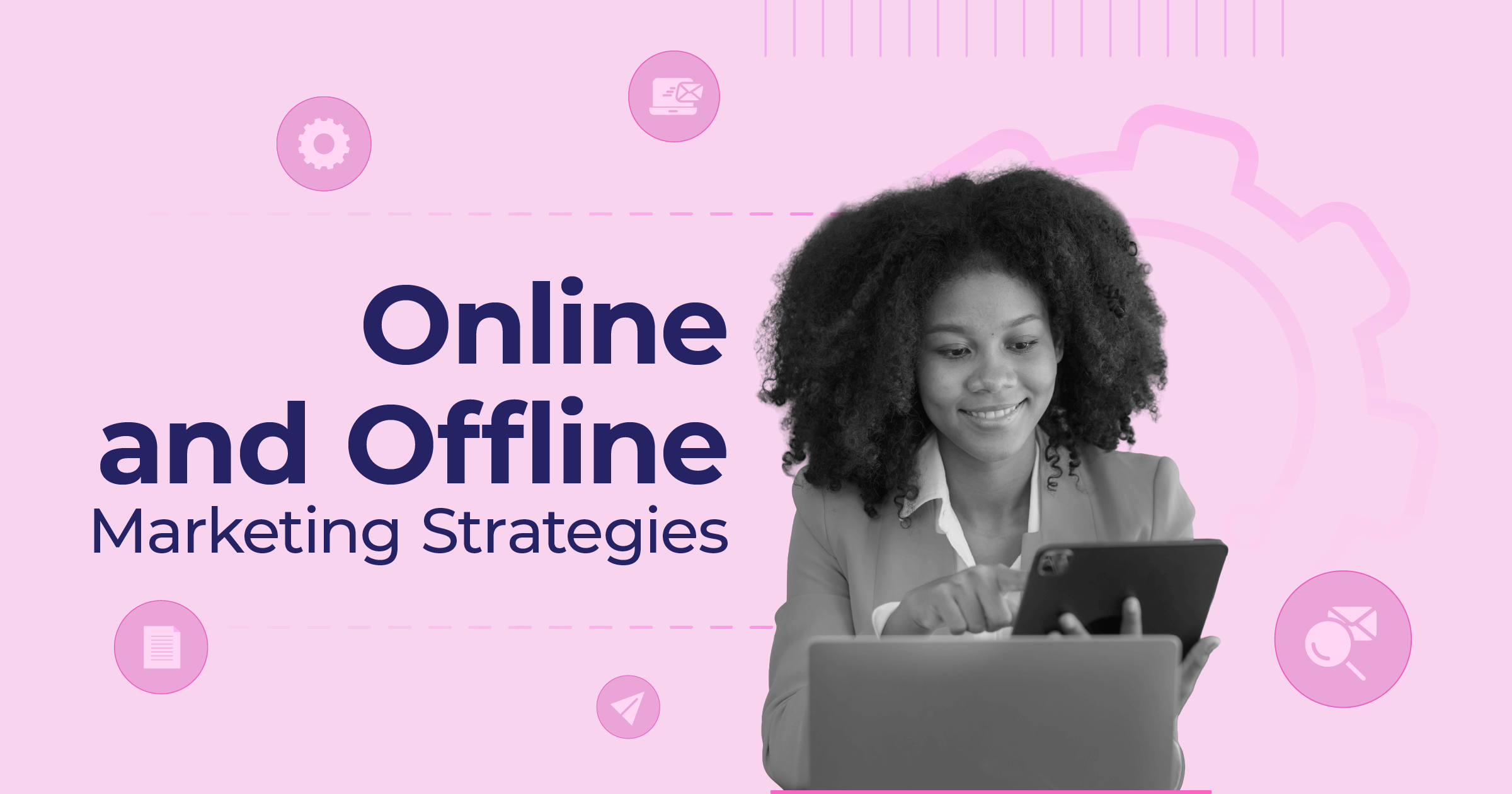
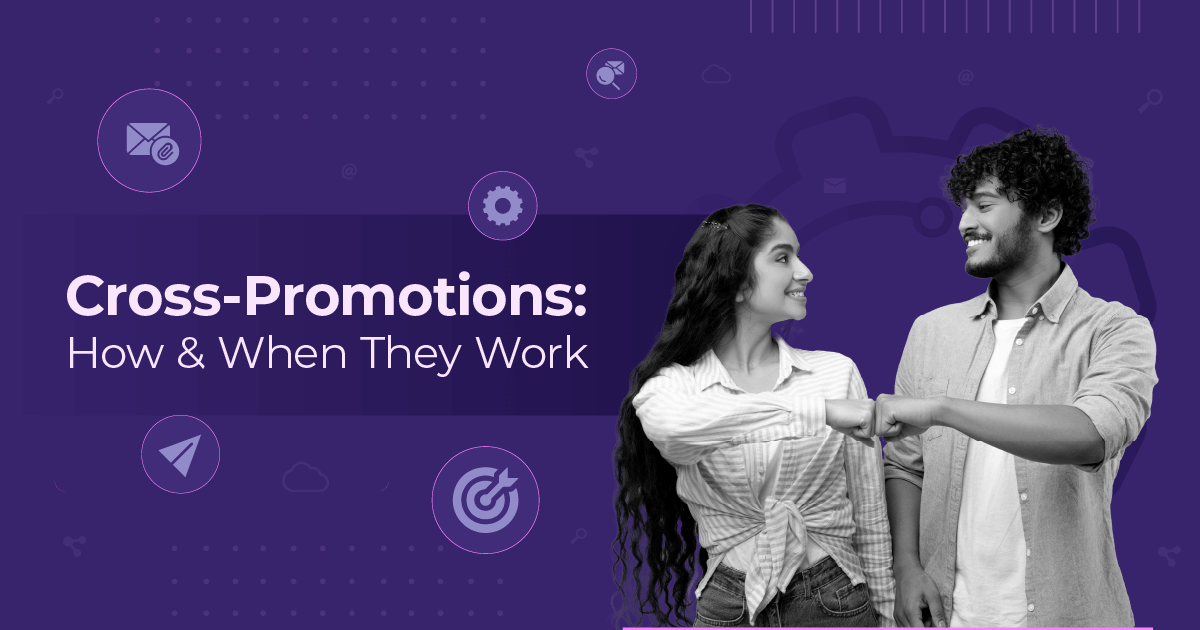

 Published by
Published by